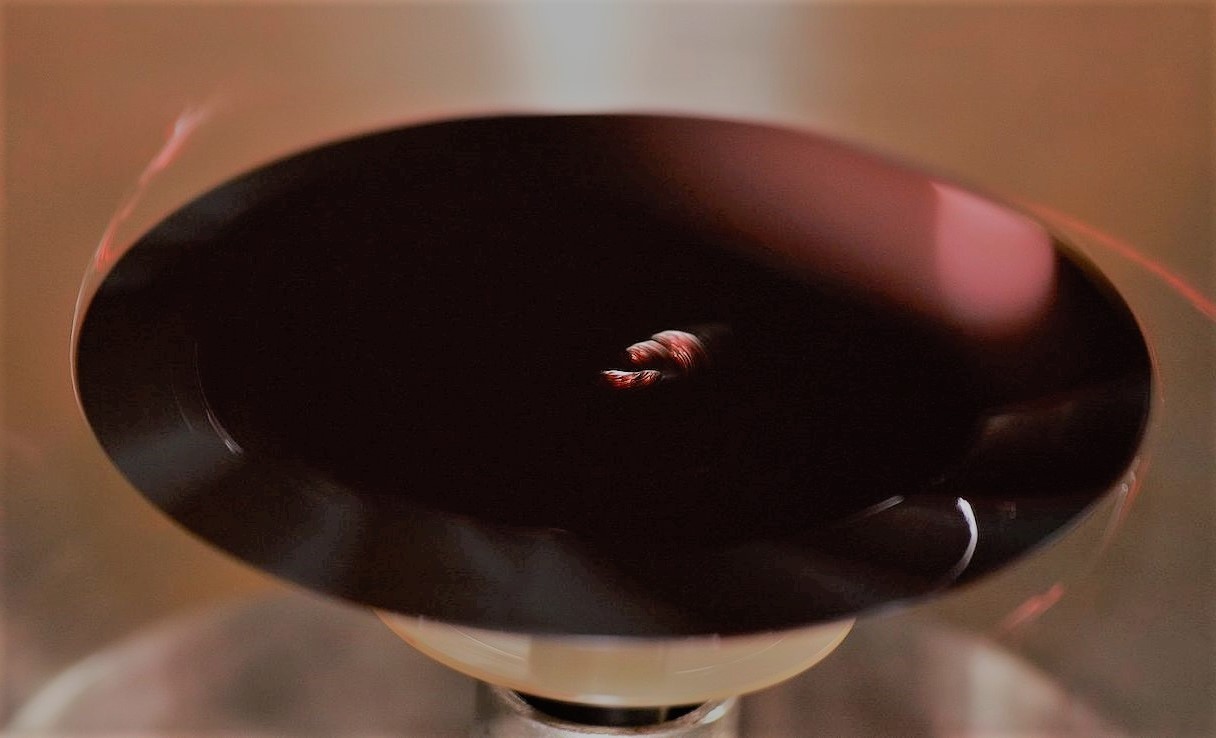
Author: Ali Kosari Mehr
Spin coating
Being a thick-film deposition method, spin coating can be utilized for the deposition of very uniform coatings, with its thickness capability, ink viscosity range, and powder loading being 1–3 μm per layer (up to ~50 μm), 0.01-1 Pa-s, and 1–20 vol%, respectively. In this method, the fluid to be deposited is placed on a substrate being stationary or slowly rotating. Afterward, the substrate begins to rotate with high acceleration, culminating in the generation of centrifugal forces. Accordingly, the presence of the centrifugal forces and their opposing adhesion forces (between the substrate and fluid) results in the generation of a shear force in the fluid and its fast ejection. At the final stage, the coating dries. The four stages of this process can be summarized as deposition, the commencement of rotation until it reaches the given spinning velocity, the end of rotation until it reaches the spinning velocity 0, and evaporation. It is not pointless here to mention that evaporation happens at all the previously-mentioned stages. The ultimate thickness of the coatings (h) hinges upon ink properties and spinning velocity:
h∝[(eηi)/(mfsρiω2)]1/3
Where mfs, ρi, ηi, e, and ω are mass fraction of solvent in the ink, density of the ink, viscosity of the ink, evaporation rate of the ink, and the spinning velocity of the spin coater. Considering that up to 95% of the material to be deposited can be wasted during the deposition process, spin coating is regarded as a comparatively inefficient method, as a result of which the deposition of expensive/environmentally unfriendly materials can be problematic by this means.
Furthermore, that the deposition process leads to an adequate coating hinges upon inks’ uniform behavior, that is they should show near-Newtonian behavior. In this regard, it should be noted that shear forces are significantly stronger at the edges of the substrate compared to those at the center and that centrifugal forces increase from zero (at the center) to Rω2 (at the edges). Should the liquid show Newtonian behavior, the viscosity could not be influenced by the difference in centrifugal force, as a result of which a uniform coating can be obtained. Notwithstanding, should the liquid show shear-thinning behavior, thinner material accumulates in the vicinity of the edges while thicker material accumulates at the center owing to the relatively higher viscosity of the liquid at the center. It is worth mentioning that although an opposite behavior can be observed when the ink shows shear-thickening behavior, this behavior may be less noticeable since the thicker material of the edge has a tendency to contain the ink at the center.
References:
- Dorey R (2012) Thick-film deposition techniques: How to make thick films – the processing techniques used to create films. Ceram Thick Film MEMS Microdevices 63–83. Webpage
-
 20 Aug, 2022What is Auger electron spectroscopy?
20 Aug, 2022What is Auger electron spectroscopy? -
 13 Jul, 2022Classification of vacuum pumps
13 Jul, 2022Classification of vacuum pumps
